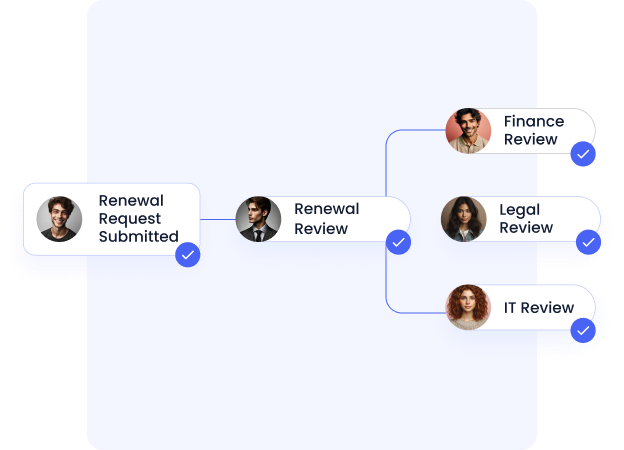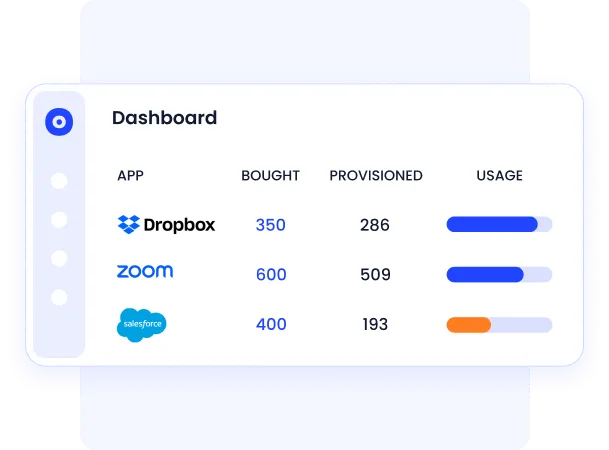HIPAA Compliance Checklist for 2025

A recent State of the CIO 2024 study revealed that 75% of CIOs struggle to balance business innovation with operational excellence. It’s a familiar dilemma: focus too much on innovation, and cracks appear in daily operations; focus only on stability, and progress slows. As a result, many IT teams still spend most of their time “keeping the lights on” instead of driving business transformation.
Effective IT operations management (ITOM) best practices change that equation. They strengthen resilience, optimize cloud resources, and free teams to innovate without sacrificing security or performance. With a strong ITOM framework, organizations can manage complex hybrid environments, reduce incident noise, and align technology efforts with broader business goals.
This article breaks down what IT operations management is, why best practices matter in 2025, eleven proven ways to modernize IT operations, and how new-age ITOM platforms simplify it all.
TL;DR
- IT operations management best practices are essential to handle today’s complex hybrid, cloud, and SaaS environments without sacrificing efficiency or innovation.
- Strong ITOM improves system reliability, cost control, compliance, and alignment with business goals, preventing costly outages and wasted resources.
- The 11 best practices include centralizing with a CMDB, automating routine tasks, aligning IT with business goals, proactive monitoring, standardizing processes, strengthening security, and continuous improvement.
- Real-world insights and credible stats (e.g., Uptime Institute outage costs) underline the business impact of poor ITOM and the value of proactive practices.
- CloudEagle.ai unifies SaaS discovery, governance, renewals, and cost optimization in one platform, helping IT, security, and procurement teams cut waste, reduce risks, and automate operations.
What Is IT Operations Management (ITOM)?
IT Operations Management (ITOM) is the process of monitoring, controlling, and optimizing all the technology systems that keep a business running smoothly. It covers everything from maintaining servers, networks, and applications to managing SaaS tools, ensuring compliance, and planning for future capacity.
Think of ITOM as the foundation that keeps digital operations stable and predictable. Without it, outages multiply, costs rise, and security gaps widen. With it, teams gain the visibility and control to deliver consistent performance across hybrid, multi-cloud, and SaaS environments.
ITOM often overlaps with IT Service Management (ITSM), but while ITSM focuses on end-user service delivery, ITOM ensures the underlying infrastructure stays healthy and secure. Together, they create a resilient IT ecosystem that supports growth and innovation.
11 Best Practices for Modern IT Operations
Strong IT operations management best practices help enterprises stay resilient, efficient, and aligned with business goals, even as environments grow more complex. Think of these as habits that turn IT from reactive to proactive.
1. Centralize with a CMDB
When asset data lives across spreadsheets, emails, or disconnected tools, visibility disappears. A Configuration Management Database (CMDB) fixes that by acting as a single source of truth for all IT assets, from servers and networks to SaaS applications and their dependencies.
By mapping relationships between systems, IT teams can instantly see the impact of a single failure or configuration change. That clarity speeds up troubleshooting, reduces downtime, and eliminates the guesswork during outages.
A centralized CMDB also supports smarter change management and audit readiness, helping IT run proactively instead of reactively.
2. Automate Repetitive IT Tasks
Every IT team has that endless cycle of ticket routing, patching, and access approvals that quietly eats into their week. These repetitive tasks may keep systems running, but they also keep teams from doing the kind of strategic work that moves the business forward.
Automation changes that. By embedding logic-based workflows into daily operations, teams can process requests faster, eliminate manual errors, and focus on innovation instead of maintenance.
And the momentum is clear. Gartner predicts that by 2026, 30% of enterprises will automate more than half of their network activities, up from under 10% in 2023. As Chris Saunderson, Sr Director Analyst at Gartner, explains:
“Infrastructure and operations (I&O) leaders are increasingly looking to AI-based analytics and augmented decision making, including intelligent automation (IA), to improve operational resilience and responsiveness, address complexity, and process increasingly large amounts of data through automation.”
This shift isn’t about replacing people but about giving them back time, clarity, and control. The more automation handles the repetitive work, the more IT can focus on what truly drives value: speed, reliability, and smarter decision-making.
3. Build a Holistic ITOM Strategy
Fixing issues as they arise may keep operations running for now, but it doesn’t build resilience. Many IT teams learn this during major transitions, such as a new SaaS rollout or a surprise infrastructure change that exposes every weak link.
A holistic IT operations management strategy brings technology, people, and processes together under one direction. It’s about building systems that adapt, not react. When operations are unified, IT can handle shifts like cloud migrations or AI integrations without disruption or last-minute scrambling.
The goal is simple: design IT operations that evolve with the business, so performance stays steady no matter how much change comes your way.
4. Align IT with Business Goals
IT delivers the most value when it’s measured against outcomes that matter to the business. When operations align with KPIs, ROI, and SLAs, teams move beyond uptime metrics to driving growth and efficiency.
Connecting technology decisions to measurable results turns IT into a strategic partner. For instance, aligning license provisioning with revenue forecasts prevents both over-provisioning and delayed access, improving spend efficiency and employee productivity.
This approach keeps IT accountable to business results, ensuring every initiative supports the broader mission instead of running in isolation.
5. Monitor Performance Proactively
Most IT teams discover performance issues when users start complaining, by then, the damage is already done. A proactive monitoring approach flips that script. It gives IT visibility into system health before disruptions cascade into downtime.
Modern ITOM tools use real-time dashboards, SLA tracking, and anomaly detection to flag irregularities early. This lets teams respond to early warning signs instead of reacting after an outage hits.
The Uptime Institute found that over 54% of significant outages cost more than $100,000, and many could have been prevented with better monitoring and process visibility.
The takeaway: proactive performance management isn’t a luxury; it’s protection against costly disruption.
6. Strengthen Security and Compliance
In today’s hybrid environments, a single unchecked access point can expose the entire organization. Security can’t sit outside daily operations; it has to be woven into them.
Integrating role-based access control (RBAC), automated audit trails, and identity governance into IT workflows reduces the risk of unauthorized access and simplifies compliance checks. When security controls are embedded, audits stop being fire drills and become part of the normal IT rhythm.
This approach not only protects data but also saves money. Non-compliance penalties and post-breach investigations cost far more than prevention. Strong security and governance are not IT priorities; they’re business essentials.
7. Standardize and Document Processes
When operational knowledge lives only in people’s heads, consistency disappears. A well-documented Standard Operating Procedure (SOP) ensures that tasks are performed the same way every time, regardless of who’s on duty.
Clear documentation shortens onboarding, reduces dependency on a few “go-to” experts, and prevents knowledge loss during turnover. In high-stakes IT environments, these small habits build long-term stability, making sure the process runs smoothly even when the people change.
8. Plan for Capacity and Scale
Few things frustrate users more than lagging systems during peak demand. Capacity planning helps IT teams forecast growth, analyze usage trends, and scale infrastructure before performance drops.
In SaaS-driven operations, capacity planning extends beyond infrastructure; it connects usage patterns, license management, and financial planning to business priorities. Anticipating demand avoids both slowdowns and waste from overprovisioning, keeping systems efficient and costs predictable.
Smart capacity planning ensures IT is ready for growth, not reacting to it.
9. Streamline Incident and Problem Management
When incidents strike, every minute counts. Without a structured process, teams waste valuable time deciding what to do next instead of resolving the issue.
Automated ticket routing, root cause analysis (RCA) playbooks, and integrated problem management workflows help teams identify patterns, reduce mean time to resolution (MTTR), and prevent repeat disruptions.
For example, automating escalation rules in service desks can turn a multi-hour incident into a 15-minute fix, freeing IT to focus on prevention instead of constant recovery.
10. Improve Collaboration Across Teams
IT operations work best when they don’t operate alone. Modern ITOM depends on close coordination between DevOps, SecOps, finance, and business leaders, because every system change, security event, or renewal decision affects multiple teams.
Shared dashboards and integrated workflows help everyone stay on the same page, creating accountability and speeding up issue resolution. When silos break down, visibility improves, handoffs become smoother, and operational goals stay aligned with business outcomes.
Collaboration fuels speed, clarity, and scale in ITOM.
11. Keep Improving Through Data and Feedback
Strong IT operations never stay static. The most reliable systems come from teams that treat improvement as a habit, not a project.
Regular trend analysis, reviews, and feedback loops help IT identify what’s working and what needs fine-tuning. Data can reveal recurring performance drops before critical cycles like month-end reporting, letting teams act before users feel the impact.
Over time, this rhythm of reflection and refinement builds a culture of operational maturity, where every change makes the system and the team stronger.
How CloudEagle.ai Powers Smarter IT Operations
Frameworks set the direction, but real impact happens in execution. Yet most IT teams still wrestle with spreadsheets, manual approvals, and disjointed tools, spending more time managing chaos than driving efficiency.
CloudEagle.ai changes that by bringing automation, visibility, and collaboration into a single, connected system built for modern IT operations.
Turn Chaos into Control with Automation
Routine processes from SaaS access approvals and license reclamation to renewal workflows often drain hours from IT teams.

CloudEagle.ai automates these actions across familiar tools like Slack or Jira, so requests flow instantly, renewals stay on schedule, and no task slips through the cracks.
The result: faster turnaround times, cleaner workflows, and more hours reclaimed for strategic projects.
Real-Time Visibility into SaaS Usage and Access
Blind spots are costly; they lead to redundant licenses, security gaps, and compliance risks.
CloudEagle gives teams full visibility into every SaaS app, user, and spend pattern, revealing dormant apps and unmanaged accounts in real time.

When Rec Room adopted CloudEagle, they gained complete visibility into free and unsanctioned apps within their SaaS stack. With automated alerts and centralized dashboards, their IT team prevented shadow IT early, eliminated duplicates, and saved over 1,260 hours annually in SaaS management.

Align IT with Finance and Procurement
Fragmented data is one of the biggest reasons IT and business priorities drift apart. When license usage, renewal dates, and spend data live in silos, no one sees the full picture.
CloudEagle.ai bridges these gaps by connecting IT, finance, and procurement within a single source of truth. Every license, contract, and cost metric becomes visible across teams, enabling shared accountability and smarter, data-backed decisions before budgets spiral out of control.
SaaS-First ITOM Done Right
Traditional ITOM tools were built for hardware-heavy environments, not SaaS-first enterprises. CloudEagle flips that model. It gives teams one system to manage SaaS operations, security, and spend – all at scale.
By centralizing governance, automating renewals, and cutting redundant apps, CloudEagle helps IT leaders reclaim control and turn their operations into a growth driver, not a maintenance cost.
Make IT Operations Work Smarter
Strong ITOM practices reduce chaos, cut downtime, and align IT with business goals. But transformation only sticks when the right tools make those best practices easy to execute.
CloudEagle.ai makes that shift real by automating SaaS workflows, delivering real-time visibility, and unifying IT, finance, and procurement on one platform. The result? Fewer fires, faster decisions, and more time for innovation.
Ready to see it in action?
Book a free demo and discover how CloudEagle turns IT operations from reactive to resilient.
FAQs
1. What are the 4 P's of operations management?
The 4 P’s are People, Processes, Products, and Partners. They represent the resources and relationships needed to deliver value efficiently and keep operations aligned with business goals.
2. What are the 7 main functions of operations management?
The 7 functions are planning, organizing, staffing, directing, coordinating, reporting, and budgeting. Together, they ensure resources are used effectively to meet performance and cost objectives.
3. What is the role of IT in operations management?
IT supports operations by automating processes, improving visibility, and ensuring system reliability. It helps reduce downtime, cut waste, strengthen compliance, and align operations with business strategy.
4. What is the main role of the IT operations manager?
The IT operations manager ensures systems run smoothly, securely, and cost-effectively. They oversee infrastructure, manage teams, resolve incidents, and align IT services with organizational needs.
.avif)
%201.svg)







.avif)




.avif)
.avif)




.png)









